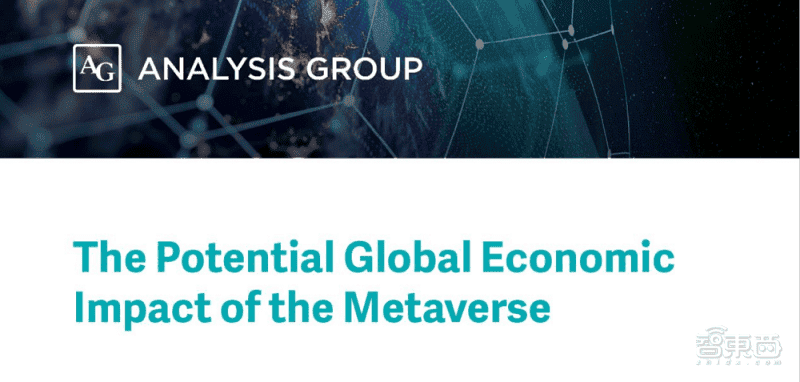Recently, Meta commissioned the Analysis Group, an international economic consulting firm. The role of the firm is to compile a Metaverse White Paper which predicts the impact of Metaverse technology on the global economy. The report has four main sections. These sections are
- Metaverse Applications and Challenges
- Similarities between Mobile Device Technologies and the Metaverse
- Using Economic Models to Study the Impact of Mobile Devices on Global GDP
- Studying the Metaverse’s Potential Economic Markets

According to the metaverse white paper, if metaverse technology starts in 2022, it will contribute $3.01 trillion to global GDP by 2031. The report also claims that a third ($1.04 trillion) will come from the Asia-Pacific region. Furthermore, the report mentions that industry analysts have already estimated the potential value and market size of the Metaverse, and they predict that the Metaverse market will be $800 billion to $2 trillion in the next few years. When there is widespread adoption of metaverse, the market will be between $3 trillion and $30 trillion. However, using the most optimistic estimate, it can exceed $80 trillion.

Here are the top 9 characteristics of Metaverse
At the moment, there is no unified definition of the metaverse. However, the metaverse white paper states that the metaverse should have the following characteristics:
1. Metaverse is an extended network of digital space. Users can have VR (Virtual Reality), AR (Augmented Reality), MR (Mixed Reality) and other 3D immersive experiences in the Metaverse, and players can interact in real-time.
2. The Metaverse is a large-scale, interactive, and real-time rendered 3D virtual network world. The Metaverse can be experienced by an unlimited number of users synchronously and persistently.
3. Users can create their own avatar accounts in the Metaverse, and the historical data of these accounts will not be emptied but will be continuously saved. In addition, account identity information, payment methods, communication methods, etc. can be shared across platforms. In other words, the platforms are compatible. Instead of the current situation, each platform (like Twitter or TikTok) needs to register a different account, and these accounts also belong to the company.
4. There are more ways to communicate. In the Metaverse, users can communicate with eyes, gestures, etc., not limited to typing or voice.
5. Metaverse can support almost all activity scenarios, such as socializing, working, learning, entertainment, shopping, creation, etc.
6. The Metaverse is an open market where enterprises and individuals can freely experience, participate in activities, create content, etc.
7. Users have digital personalities and digital assets in the metaverse. Users can buy a piece of digital clothing on one platform and still “wear” it on another platform. This digital clothing belongs to the user, not the platform.
8. The metaverse is not an object or a space, but a way in which different technological components interconnect. These technologies include AR, VR, MR, blockchain, NFTs (cryptocurrency tokens), and more.
9. Metaverse will break the Internet’s dependence on devices and geographic locations. It will create an online experience that people can participate in without being physically present through a naturally seamless and immersive experience.

Metaverse technology is still in its infancy and needs further construction and improvement
While the Metaverse has enormous economic potential, the speed at which it reaches the desired economy depends on infrastructure development. It also depends on the pace of technology deployment, the usage of the Metaverse by consumers and businesses, etc. The report mentions that we are still in the early stages of metaverse construction. Furthermore, it also reveals that many of the necessary conditions for the realization of the metaverse are still lacking.
Technologist and venture capitalist Matthew Ball identified three core elements needed to realize the metaverse: concurrent infrastructure, standard protocols, and user introduction. Concurrency infrastructure is the technology that enables millions of users to synchronize a shared network. Unlike the current internet where servers are connected one-to-one, the Metaverse requires multiple servers to be connected in parallel.
Also, the Metaverse is a large ecosystem that requires large-scale collaboration among many companies. Therefore, the Metaverse needs unified standards and protocols. After building the metaverse platform, how to attract more users to the metaverse platform is a key issue. Metaverse platforms must provide users with unique value and advantages in order to be promoted by users. If users feel that shopping on the Metaverse is more troublesome than going to the mall themselves, then the Metaverse technology may not be widely adopted. In addition, the Metaverse faces other challenges in policy oversight, data privacy, and content security.

Conclusion: metaverse technology needs to continue to develop
This Metaverse White Paper by Analysis Group provides a more comprehensive explanation of the metaverse’s definition, application examples, economic impact, and more. Through this report, we can get a glimpse of the current state of development of metaverse technology. According to the conclusion of the report, if the metaverse technology develops in a similar way as mobile devices, then in 10 years, the metaverse will contribute 2.8% of the global GDP, and by 2031, the global GDP created by the metaverse will reach 30%.
However, this conclusion, based on the metaverse developing in a similar way to mobile devices, is just speculation. Analysis Group also stated in the report that since there is currently not enough “metaverse data” to measure, it just used existing tools and data to create an analog for the metaverse to speculate on the future of the metaverse. In addition, Analysis Group also mentions in the report that the current metaverse technology is still in its infancy. If we want to make the metaverse a reality, we have to keep working on infrastructure, policy agreements, and more.





